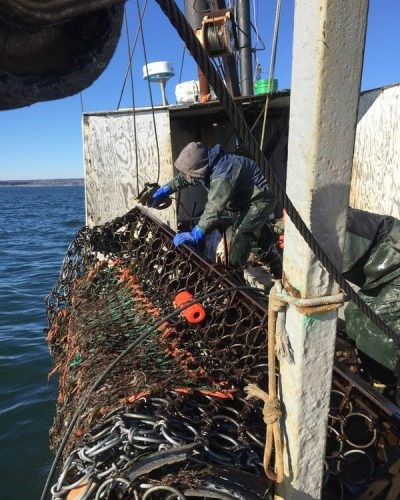Despite fishes’ well documented strong sensitivity to temperature and other physical ocean parameters, modelling these shifts has proven difficult. A key issue is the scarcity of temperature data at depth, where fish usually are. As stated by Captain Lawrence Moffet, F/V Matt & Patt:
Temperature data is absolutely critical to target specific species, especially with permit restrictions on by catch… It is not one degree, but a small fraction of a degree change in bottom temperature that completely changes a lobster’s behaviour.
Coastal and shelf model accuracy is currently not accurate enough to meet the needs of this user, due in large part to lack of data in these regions. Fishermen often have limited catch quota allocations, meaning that they are targeting certain species, while working hard to avoid other species. Precise temperature and ocean condition data can help inform where certain species are likely to be.
The data visualization feature, showing the data over time is different from how it is displayed in near real time on the vessel, allowing fishing vessel operators to interactively and intuitively browse their past data, as well as data coming from other platforms in their areas of interest. EMODnet physics has proved the best visualization for the fishing captains to investigate their data by presenting sub-surface TS data being collaboratively collected with fishing vessels to the oceanographic community by programs such as Environmental Monitors on Lobster Traps and Large Trawlers (eMOLT) and Berring Data Collective. There are a range of small to medium fishing vessels from East Coast of the USA to Danish and Norwegian waters who use these visualizations of the data that they collect.
This data steam, and the subsequent visualization on EMODnet, enables a higher degree of precision in fishing. This precision increases the profitability of fisheries, and subsequently the economic sustainability of coastal communities. However, the negative ecosystem impacts of fisheries are reduced, both by reducing unintended bycatch, and by reducing the carbon footprint of fisheries by making operations more efficient.

